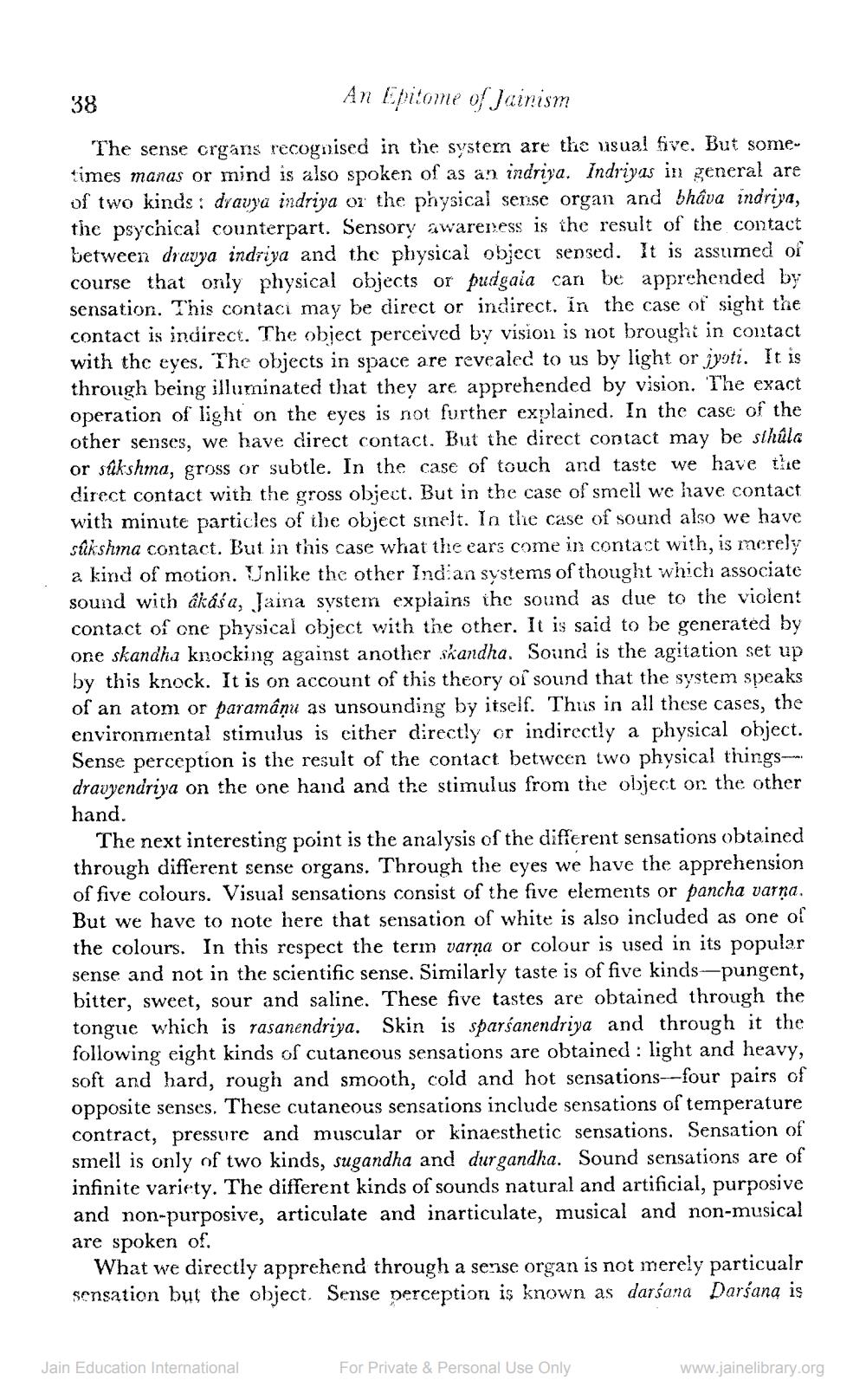________________
38
An Epitome of Jainism
The sense organs recognised in the system are the usual five. But sometimes manas or mind is also spoken of as an indriya. Indriyas in general are of two kinds: dravya indriya or the physical sense organ and bhava indriya, the psychical counterpart. Sensory awareness is the result of the contact between dravya indriya and the physical object sensed. It is assumed of course that only physical objects or pudgaia can be apprehended by sensation. This contact may be direct or indirect. In the case of sight the contact is indirect. The object perceived by vision is not brought in contact with the eyes. The objects in space are revealed to us by light or jyoti. It is through being illuminated that they are apprehended by vision. The exact operation of light on the eyes is not further explained. In the case of the other senses, we have direct contact. But the direct contact may be sthúla or sûkshma, gross or subtle. In the case of touch and taste we have the direct contact with the gross object. But in the case of smell we have contact with minute particles of the object smelt. In the case of sound also we have sûkshma contact. But in this case what the ears come in contact with, is merely a kind of motion. Unlike the other Indian systems of thought which associate sound with akása, Jaina system explains the sound as due to the violent contact of one physical object with the other. It is said to be generated by one skandha knocking against another skandha. Sound is the agitation set up by this knock. It is on account of this theory of sound that the system speaks of an atom or paramaņu as unsounding by itself. Thus in all these cases, the environmental stimulus is either directly or indirectly a physical object. Sense perception is the result of the contact between two physical thingsdravyendriya on the one hand and the stimulus from the object on the other hand.
The next interesting point is the analysis of the different sensations obtained through different sense organs. Through the eyes we have the apprehension of five colours. Visual sensations consist of the five elements or pancha varna. But we have to note here that sensation of white is also included as one of the colours. In this respect the term varna or colour is used in its popular sense and not in the scientific sense. Similarly taste is of five kinds-pungent, bitter, sweet, sour and saline. These five tastes are obtained through the tongue which is rasanendriya. Skin is sparsanendriya and through it the following eight kinds of cutaneous sensations are obtained: light and heavy, soft and hard, rough and smooth, cold and hot sensations--four pairs of opposite senses. These cutaneous sensations include sensations of temperature contract, pressure and muscular or kinaesthetic sensations. Sensation of smell is only of two kinds, sugandha and durgandha. Sound sensations are of infinite variety. The different kinds of sounds natural and artificial, purposive and non-purposive, articulate and inarticulate, musical and non-musical are spoken of.
What we directly apprehend through a sense organ is not merely particualr sensation but the object. Sense perception is known as darśana Darśana is
Jain Education International
For Private & Personal Use Only
www.jainelibrary.org




